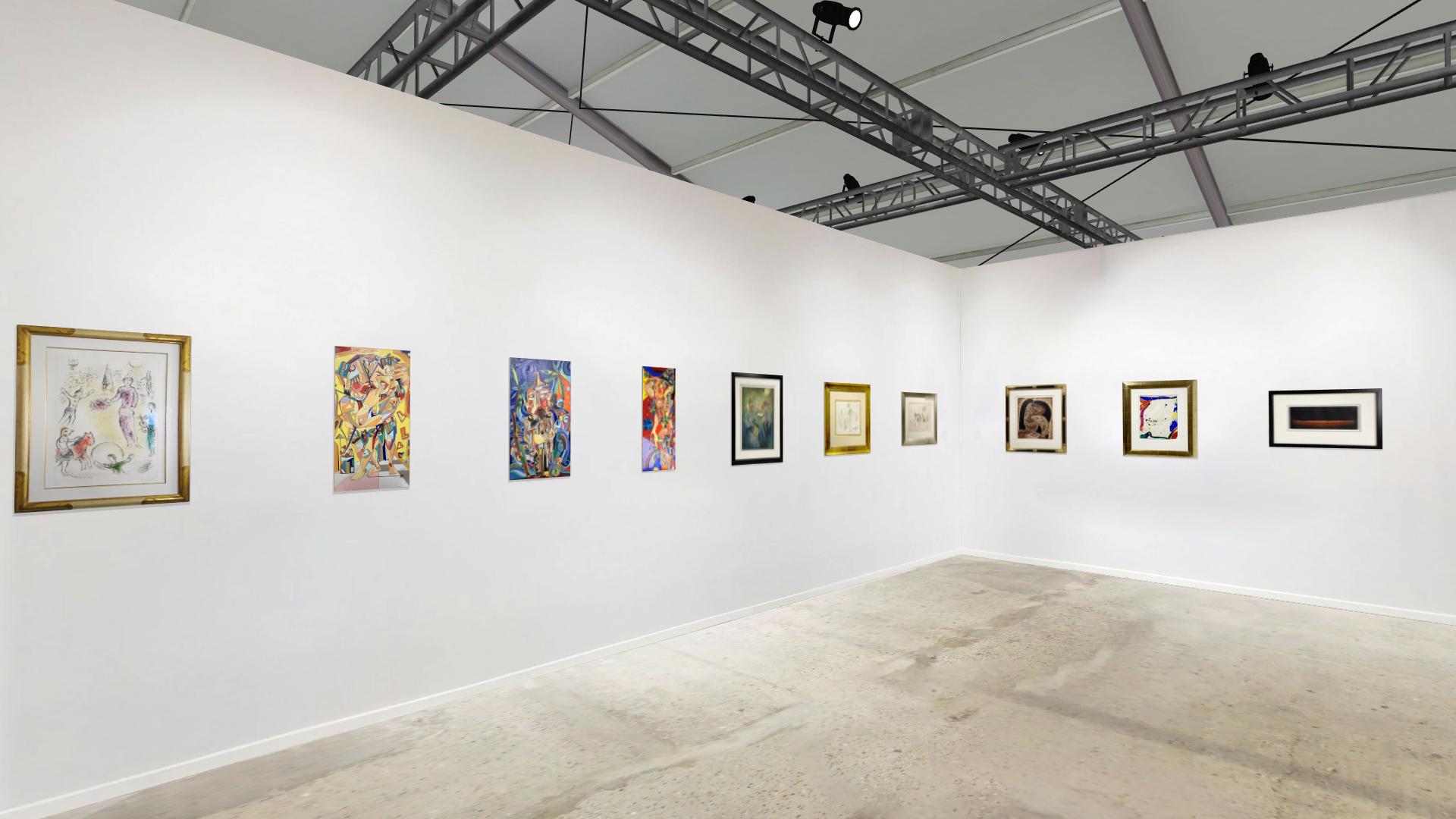

Loading...


WALKER FINE ART FEATURES THE PRINTS AND WORKS ON PAPER OF M. C. ESCHER, INTRODUCES THE SCULPTURE OF ANTON BAKKER
By Peter Frank
For years, Rock J. Walker has advocated for the work of famed Dutch printmaker M. C. Escher at art fairs and exhibitions around the United States and globally. As the owner of one of th... more >> WALKER FINE ART FEATURES THE PRINTS AND WORKS ON PAPER OF M. C. ESCHER, INTRODUCES THE SCULPTURE OF ANTON BAKKER
WALKER FINE ART FEATURES THE PRINTS AND WORKS ON PAPER OF M. C. ESCHER, INTRODUCES THE SCULPTURE OF ANTON BAKKER
By Peter Frank
For years, Rock J. Walker has advocated for the work of famed Dutch printmaker M. C. Escher at art fairs and exhibitions around the United States and globally. As the owner of one of the largest collections of Escher’s intricate graphics in the world — a collection that brims with surprises for even the most enthusiastic Escher fan — Walker has striven not just to keep the artist popular among the general public, but to demonstrate the substance and profundity of the work in the eyes of the art world.
The latter has been a harder sell than the former. Since the 1960s M. C. Escher’s images have graced dorm rooms and offices around the country. The appeal of his optical gamesmanship, enhanced by his graphic exactitude, has engaged and even inspired lovers of paradox and lovers of precision alike — to the point where many art sophisticates have isolated and dismissed Escher as puzzle-playing kitsch. Walker’s presentations, in museums and art fairs alike, argue against that regard: they show the artist in full retrospect, featuring not only his best-known and most elaborate prints, but his earlier, more straightforward but no less masterful works, including landscapes and architectural studies realized during Escher’s youthful sojourn in Italy. Where possible, Walker pairs prints with original drawings to illuminate the development of a visual idea and its transfer from visual notation to finished image.
Walker gives context to Escher’s work not simply on its own terms, but on general art-historical terms as well. With the Eschers he displays prime examples of prints and works on paper by other modern masters — Picasso, Miro, and Dali, but also works by less universally known modernists such as Surrealist Roberto Matta and Abstract Expressionist Sam Francis, artists widely regarded in the art world as significant and substantive. In a few cases, Walker champions artists who have fallen into obscurity; the case of Ernest Trova, a Pop Art-related sculptor of faceless, machine-like “falling men” whose fame has been eclipsed since his ‘60s heyday, is one Walker has taken up enthusiastically.
Another sculptor now being featured by Walker can be called an artistic “grandson” of Escher himself. Anton Bakker, a Dutch-born resident of Norfolk, Virginia, never met Escher, but was close with, and inspired by, someone who had. As a student, Koos Verhoeff, a family friend of the Bakkers’ — and father figure to Anton — had several rendezvous with Escher, sharing with the artist a passion for mathematics, solid geometry, and paradoxical relationships. Later in life Verhoeff, well known in Holland as a computer scientist, began fashioning in three dimensions the elaborate but logical geometric structures proposed by Escher in two. Verhoeff passed on his Escherian concepts, and his passion for a mathematically-driven art, to Bakker. After his own successful career in data management, Bakker turned full time to the realization of mathematically grounded sculpture.
Verhoeff’s sculptures are relatively rough-hewn; by contrast, Bakker strives for an elegance that emulates not only Escher’s mathematical thinking, but his seamless execution as well. Symmetry is key to Bakker’s mindset: as he professes, he seeks a “dynamic symmetry,” in which form remains balanced from whatever angle the object is perceived, but the form itself changes radically. The loops, curves, and interlacings of Bakker’s “Path Perspective” series, for example, propose a graceful kinesis from any given angle — but from one angle the confident swoops can describe a bulbous, almost botanic form, while from another those sensuous waves align with and hide one another to describe a nearly perfect square. The viewer’s position relative to the object does not have to change that much to effect that much change.
This is the same kind of optical magic, part biology, part architecture, and part choreography, that animates Escher’s pictures, both the famous illusory works of his postwar period and the relatively conventional earlier works. Bakker does not take his forms right out of Escher; he takes the spirit and the reasoning from his artistic grandfather and turns it into something self-defining, something that translates and modifies Escher’s, and Verhoeff’s, aesthetic DNA. By placing Anton Bakker’s monumental lyricism side by side with M. C. Escher’s exquisite exactitude, Rock Walker maintains the vitality of Escher’s legacy through evolution as well as by example.







